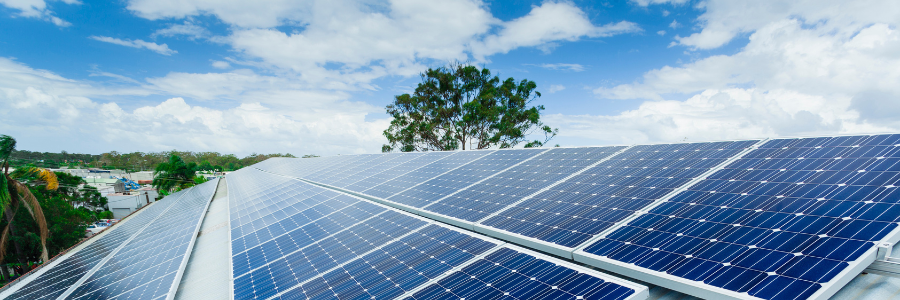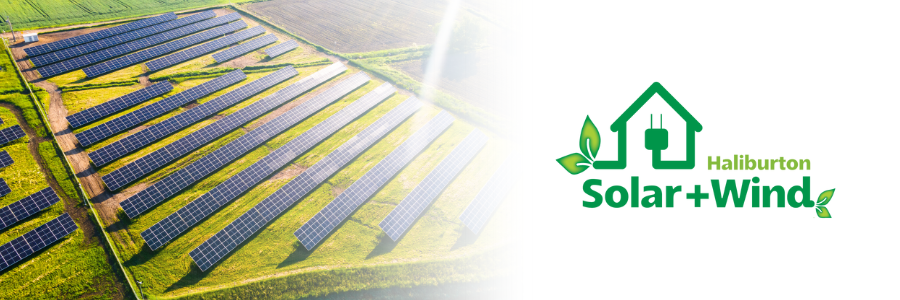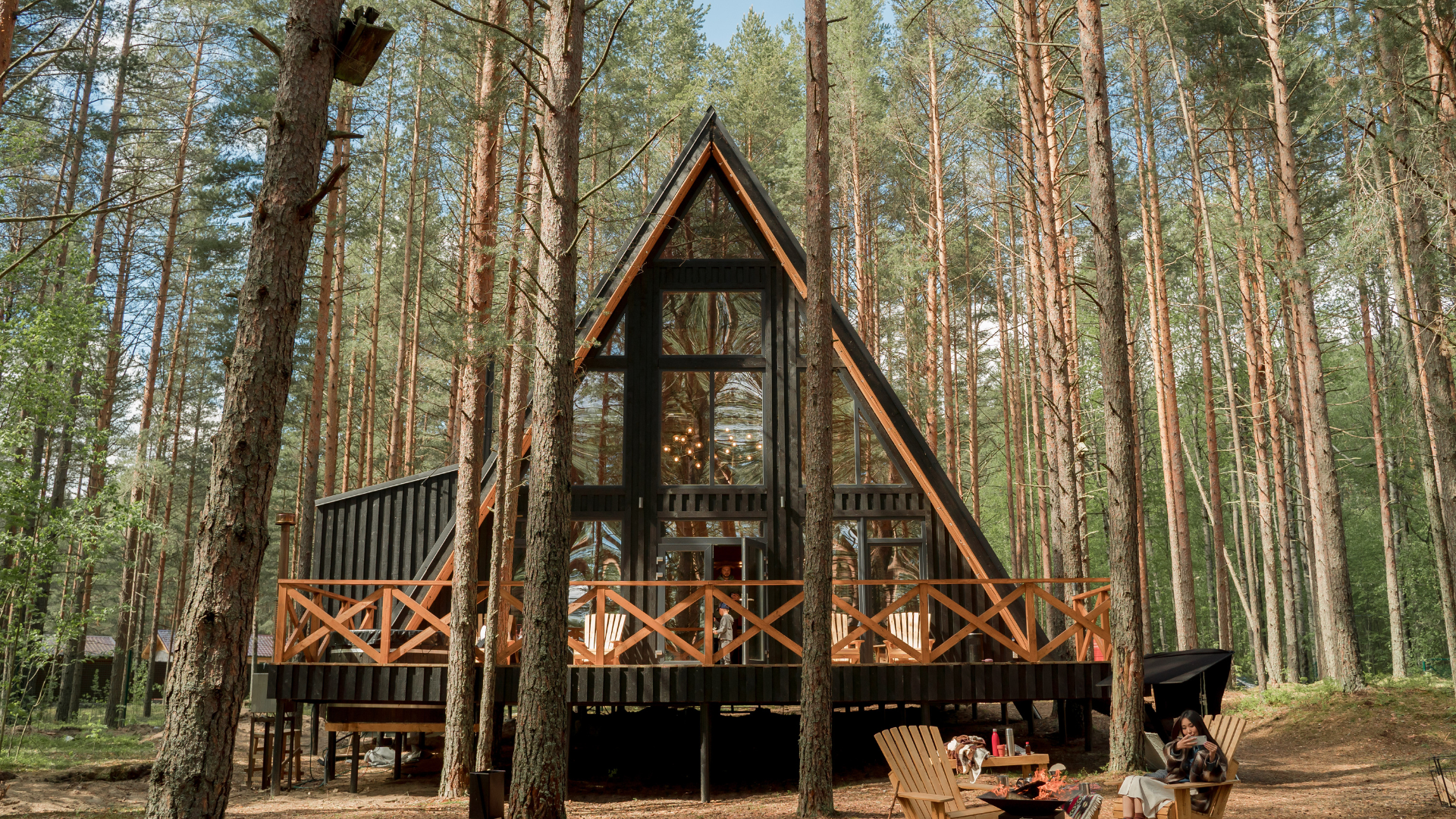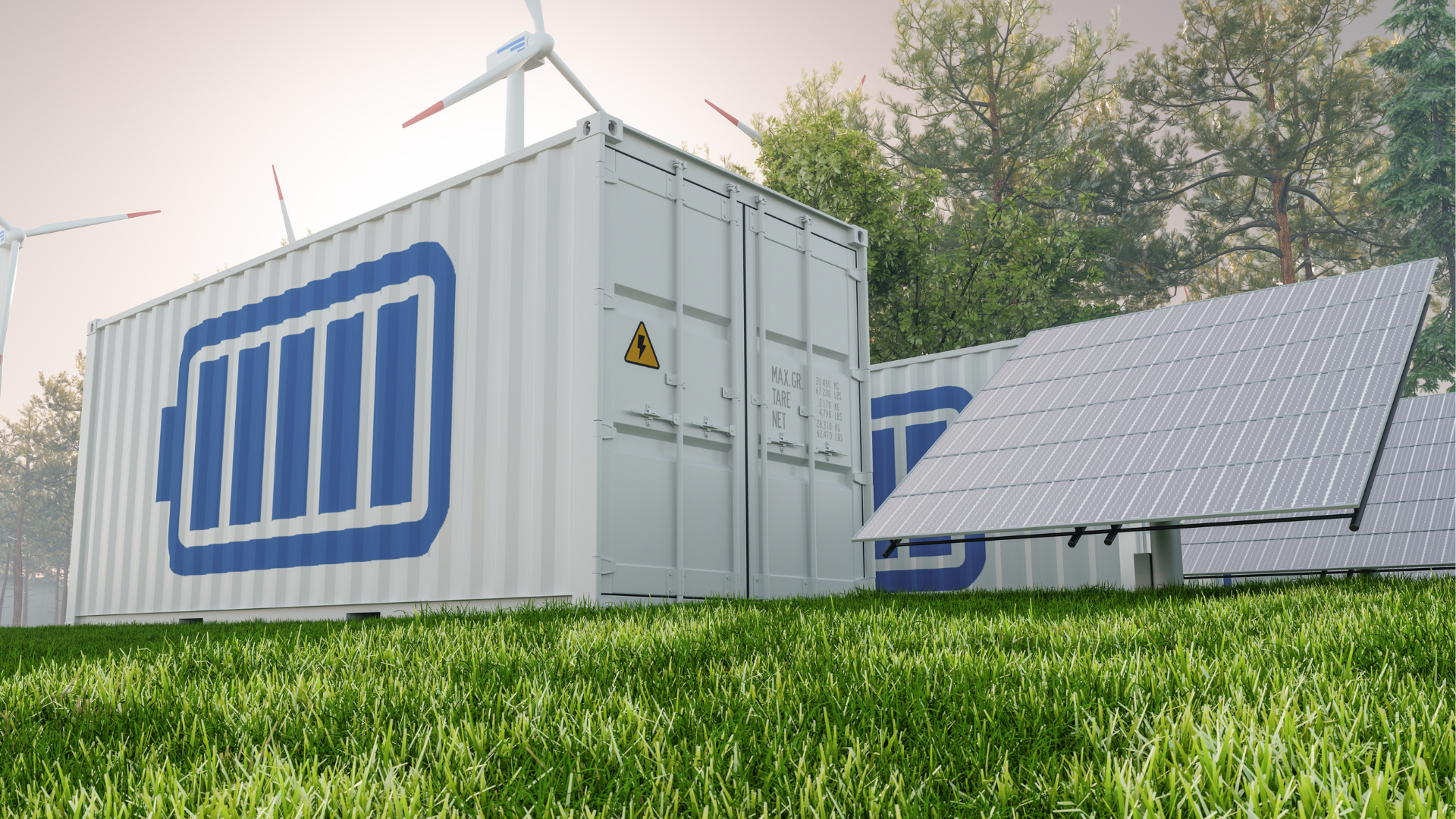How Solar and Wind Energy Can Reduce Your Carbon Footprint in Haliburton
In today's ever-evolving global landscape, understanding and minimizing our carbon footprint has never been more crucial. As the adverse effects of climate change become increasingly evident, regions worldwide, including Haliburton, are seeking sustainable solutions to curtail their environmental impact.
Enter solar energy and wind energy—two
renewable power sources that have emerged as frontrunners in the battle against rising carbon emissions. For the picturesque landscapes and communities of Haliburton, these energy forms not only promise a cleaner environment but also pave the way for a more sustainable future. In this article, we'll delve deep into how harnessing the sun and wind can dramatically reduce Haliburton's carbon footprint, ensuring a greener tomorrow for generations to come.

Understanding Carbon Footprint in Haliburton
At its core, a carbon footprint refers to the total amount of greenhouse gasses, primarily carbon dioxide, that are emitted directly or indirectly by human activities. These emissions can come from a variety of sources, including transportation, industry, agriculture, and energy consumption. The larger the carbon footprint, the more significant its contribution to global warming and, consequently, its environmental impact.
In Haliburton, a region renowned for its natural beauty and vibrant communities, the stakes are high. Recent data reveals a concerning trend: carbon emissions in Haliburton have been on the rise. These emissions threaten not only the global atmosphere but also the pristine lakes, forests, and wildlife unique to Haliburton. The cascading effects of increased greenhouse gasses could lead to more frequent and severe weather events, altered habitats, and a strain on local resources.
Recognizing the environmental impact of these emissions, Haliburton is turning its attention to innovative solutions. Tapping into renewable energy sources, particularly
solar and wind energy, appears to be a promising avenue to curb this alarming trend and safeguard the environment for the present and future generations.
The Power of Solar Energy in Haliburton
Solar power is not just an energy alternative; it's a statement about harnessing nature's most abundant resource—the sun. But how does it transform the golden rays into electricity, and why is it becoming a beacon of hope in places like Haliburton?
How Solar Energy Works
Solar energy operates on a simple principle. Photovoltaic cells, often grouped together in panels, absorb sunlight. These cells contain semiconductors that, when hit by photons (light particles), release electrons, leading to the flow of electricity. This electricity can then be used immediately, stored, or even sold back to the grid.
Benefits of Solar Energy
Economic Benefits
- Economic Savings: With solar installations, residents and businesses can notice a significant decrease in their monthly energy bills. As the costs of traditional energy sources continue to rise, solar offers a fixed and often more affordable rate.
- Increased property values: Homes and businesses with solar installations often see an increase in their market value.
- Job creation: The demand for solar installation and maintenance has led to job opportunities, boosting Haliburton's local economy.
Environmental Benefits
- Reduced carbon emissions: Solar power is clean, meaning it emits no greenhouse gases. Thus, every kilowatt-hour produced by solar reduces the carbon footprint.
- Preservation of natural habitats: With less reliance on fossil fuels, the environmental disruptions caused by mining and drilling can be reduced.
Societal Benefits
- Energy independence: Solar energy reduces dependency on external energy sources, giving Haliburton more control over its energy future.
- Community engagement: Solar initiatives often bring communities together, fostering a sense of unity and shared purpose.
The Synergy of Solar and Wind:
Complementary Energy Production: Solar and wind energy often complement each other throughout the day. While solar panels produce energy during sunny hours, wind turbines can generate power during nighttime and cloudy days when the sun isn't as potent. This ensures a more consistent energy supply.
- Optimal Land Utilization: By co-locating solar panels and wind turbines on the same piece of land, space efficiency is maximized. This dual-use can be particularly beneficial for businesses or homeowners with limited space.
- Infrastructure Efficiency: Shared infrastructure like energy storage systems, grid connections, and maintenance facilities can lead to cost savings when both energy sources are harnessed together.
Benefits of the Combined Approach
- Cost Efficiency: Leveraging both solar and wind means reducing dependency on external energy sources and their fluctuating prices. Over time, as the initial investment costs are offset by reduced energy bills and potential income from feeding surplus energy back into the grid, the combined system becomes increasingly cost-effective.
- Energy Reliability: With both solar and wind at play, there's a higher likelihood that at least one energy source is generating power. This dual-system approach reduces the risk of energy shortfalls and offers a more reliable energy solution for Haliburton.
- Enhanced Carbon Reduction: The combination of solar and wind energy ensures maximum utilization of renewable sources. This not only leads to significant carbon reduction but also positions Haliburton as a leader in sustainable practices.
The Role in Reducing Carbon Footprints
Harnessing the joint might of solar and wind energy offers an effective pathway to curbing Haliburton's carbon emissions. Each kilowatt-hour generated from these sources replaces electricity that would have otherwise come from fossil fuels, leading to direct carbon reduction. As residents and businesses increasingly adopt this combined approach, the cumulative reduction in carbon emissions will be monumental.
The collaboration of solar and wind energy presents a promising future for Haliburton. By capitalizing on the energy synergy of these two potent renewable sources, the region stands poised to achieve economic resilience, environmental sustainability, and a notable reduction in its carbon footprint. The path to a greener tomorrow in Haliburton is brightly illuminated by the sun and propelled by the winds of change.
Challenges and Considerations in Haliburton's Renewable Energy Journey
As Haliburton embarks on its ambitious energy transition towards renewable sources, it's essential to recognize and address the potential challenges that might arise. Both solar and wind energy, while offering a plethora of benefits, come with their set of obstacles. Understanding these implementation challenges is crucial for the community to navigate them effectively and ensure a successful transition.
Potential Challenges in Implementing Solar and Wind Energy
- Initial Costs: The upfront costs for installing solar panels and wind turbines can be significant. While prices have decreased over the years, the initial investment still remains a barrier for many.
- Weather Limitations: Haliburton's varied climate might not always provide consistent sunlight or wind. Days with little to no sun or wind can affect energy generation.
- Land Use: Large wind turbines require significant space. In areas with dense forests or populated neighborhoods, finding suitable locations can be challenging.
- Maintenance and Durability: Regular maintenance is crucial to ensure the longevity and efficiency of solar panels and wind turbines. Harsh weather conditions can potentially damage the installations.
- Public Perception and Acceptance: Despite the evident benefits, some community members might have reservations about the aesthetics of large wind turbines or misconceptions about the effectiveness of solar panels.
Tips to Navigate These Challenges
- Seeking Financial Incentives: Government grants, tax breaks, and community co-op programs can alleviate the financial burden of initial costs. Residents and businesses should stay informed about available financial aids to make these technologies more accessible.
- Diversified Renewable Portfolio: To counteract the unpredictability of weather, combining solar and wind ensures that if one source is underperforming, the other can compensate, maintaining consistent energy production.
- Innovative Land Use: Vertical wind turbines or community-shared solar and wind farms can be cost-effective solutions that address land use challenges while benefiting the larger community.
- Preventive Maintenance: Regular checks and quality installations can extend the lifespan of solar panels and wind turbines. Collaborating with reputable service providers ensures that the installations are durable and efficient.
- Community Engagement and Education: Hosting community seminars, workshops, and open discussions can address concerns and misconceptions. Real-life success stories can also serve as compelling testimonials to encourage broader acceptance.
In essence, while the path to a sustainable energy future in Haliburton might have its hurdles, with informed strategies and a collaborative approach, these challenges can be transformed into opportunities. By focusing on cost-effective solutions and proactive engagement, Haliburton's energy transition journey will be both impactful and enduring
Encouraging a Greener Future in Haliburton
In the heart of Ontario, Haliburton is not just a scenic haven but also a community poised on the cusp of an environmental revolution. The shift towards a sustainable future is not just about technologies or resources; it's about people, collaboration, and shared vision.
Local Incentives and Support:
Several Haliburton green initiatives have been introduced to ease the transition to renewable energies for both homeowners and businesses.
Grants and Incentives: The local government, recognizing the significance of renewable energy, has rolled out a series of grants to offset installation costs. These grants, which vary based on the scale and type of renewable energy system, can substantially reduce the initial financial barrier faced by many.
Tax Breaks: Property owners who invest in solar panels or wind turbines might be eligible for tax breaks or reduced property tax rates, providing an added financial incentive to make the green switch.
Education and Workshops: The community has also seen a surge in educational workshops and seminars, focusing on the benefits of renewable energy. These sessions, often subsidized or free, provide residents with the knowledge they need to make informed decisions.
The Community's Role:
Community-Led Projects: Several neighborhoods have come together to launch community solar gardens or shared wind turbine projects, pooling resources and sharing the benefits of generated electricity.
Promoting Awareness:
Grassroot movements, school programs, and local environmental groups play a pivotal role in raising awareness, dispelling myths, and ensuring that the shift to renewable energy is a communal effort.
Supporting Local Green Businesses: With the rise of Haliburton green initiatives, numerous local businesses offering renewable energy solutions have emerged. Supporting these businesses is a vote for a sustainable local economy and environment.
The beauty of Haliburton's landscapes, the pristine waters, and the lush forests are a legacy we've inherited. It's our collective responsibility to ensure that this legacy remains untarnished for future generations.
With the plethora of renewable energy incentives and the unwavering community support, there's never been a better time for Haliburton residents to embrace a greener future. It all begins with a step - a step towards information, a step towards collaboration, and most importantly, a step towards action.
So, to every Haliburton resident reading this: Dive into the resources available, discuss with your neighbors, and take that first crucial step. Together, we can ensure that Haliburton remains as breathtaking tomorrow as it is today.
Frequently Asked Questions:
*By understanding these facets of renewable energy in Haliburton, residents can make informed decisions and play a pivotal role in the community's green transition.
Conclusion
As we've journeyed through the intricacies of renewable energy, one thing becomes abundantly clear: Haliburton's future is bright and sustainable, with the immense potential of solar and wind energy leading the way. The picturesque landscapes, the vibrant communities, and the profound sense of belonging that Haliburton evokes deserve an environment that's as pristine and sustainable as its legacy.
The power of solar and wind energy goes beyond mere technology or savings. It embodies hope—a hope for a cleaner, greener world. It represents a commitment to carbon footprint reduction and a pledge to leave behind a world for our children that's as beautiful, if not more, as the one we inherited.
But this transition isn't just about resources, technologies, or incentives. It's about people. It's about every homeowner who chooses to install a solar panel, every business that erects a wind turbine, and every child who grows up understanding the value of sustainable choices.
So, as we stand at this pivotal juncture, the call to action is clear. Let's not be mere spectators in the story of Haliburton's future. Let's be the protagonists. Let's be the changemakers. Dive deep into the available resources, engage with the community, ask questions, and most importantly, take proactive steps on your sustainable energy journey.
Together, we can ensure that the Haliburton we know and love continues to thrive, setting an example for the world and echoing the sentiment that a sustainable future isn't just a dream—it's a choice we make today.
To further your understanding and knowledge on the topics discussed, the following references and links have been compiled:
Smith, J. (2021). Solar and Wind Energy Trends in Ontario. Energy Studies Journal.
Haliburton County Environmental Report (2022). Haliburton's Carbon Emissions and Renewable Energy Initiatives.
Jones, L. & Carter, R. (2020). The Synergy of Solar and Wind Energy. Renewable Resources Journal.
Haliburton Renewable Resources:
Haliburton Solar Community Initiative
Haliburton Wind Energy Co-operative
Local Business Partnerships:
GreenTech Haliburton – Solar and Wind Energy Solutions
Haliburton Renewable Installers – Your Local Energy Experts, Haliburton Solar and Wind
Patterson, K. (2019). Economic Impacts of Renewable Energy in Small Communities. Economic Development Quarterly.
Haliburton Local Incentives and Tax Breaks Information:
Haliburton Energy Savings Program
Haliburton County Renewable Energy Tax Incentives
For a comprehensive understanding and to explore potential partnerships, we encourage readers to delve into these resources and actively engage with local entities championing Haliburton renewable resources.
Community Greenhouse Gas Inventory and Local Climate Projections
